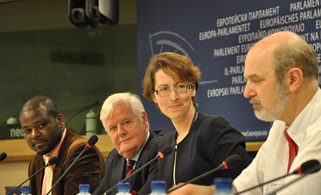By Rev. Dr. Samuel Richmond
For long centuries, India has been the home for Jews, and they have imbibed the Indian culture beautifully. Paradoxically, even after their long stay in India, they maintained their identity. As Rabbi Ezekiel Isaac Malekar, Head Priest of the Synagogue Judah Hyam Hall New Delhi, describes it,”Israel is in my heart, India is in my blood.” It is said that India is perhaps the only country in the world in which, through the long centuries, Jews have dwelt in complete security and have always been treated honourably in the social structure of the land. During the holocaust, many Indians who dwelt near the coast of Maharastra and Gujarat provided shelter to many Polish and East European Jews. In turn, Jews contributed to India in arts, defence, culture and economy.
History
According to the Bible, as mentioned in the Book of Esther (which probably dates back to the second century B.C.) Jews had a connection with India. It records decrees of the Persian monarch Xerxes relating to Jews, dispersed throughout the 127 provinces of his empire stretching ‘from India even unto Ethiopia.’ Before the holocaust, the presence of Jews in India was based on trade, as India was well known for its spices and natural resources throughout the world. When we speak of Indian Jews, we mean Jews who were to be found settled in India much later. The Jews of India fall into three distinct categories. (a) Marathi-speaking Jews call themselves Bene Israel (the children of Israel of the Bible). These Jews have resided on the west coast of India in the Konkan region of Maharashtra for centuries. (b) Cochin Jews who took shelter in and around Cochin, i.e. the south of India. Now we hardly find any Jewish families there. They stayed in this region for economic reasons. (c) The third group consists of Jews from West Asia, mainly from Baghdad. They settled in Calcutta, Bombay, Pune and Surat.
Jewish-Christian Relations
It is said that the two disciples of Jesus, St Thomas and St Bartholomew, came to India because of the existence of two separate Jewish communities there in 50 A.D. (i.e. Bene Israel and Cochin Jews). In 900 A.D., the Jews residing in Malabar were closely associated with the Christians. Care and trust were evident within these communities. There was no antagonism between the local Jews and the Christians. In one of the letters written in 1738, the Danish missionary J.A. Sartorius mentions a community of Jews in ‘Surat and Rajapore’ who called themselves Bene Israel. This Jewish community neither had access to a Bible (i.e. the Old Testament) nor knew Hebrew. David Rahabi, son of Ezekiel Rahabi, visited Western India on a mission with the help of the Dutch East India Company, where they encountered Bene Israel. After spending some time with the Bene Israel community, he observed that their dietary habits and religious observances were influenced by Hinduism and concluded that they had lost their identity as Jews. He chose three of them and took them to Kochi and trained them in the Hebrew language and taught them the principles of Judaism. In this way, Bene Israel and Kochi Jews’ relations were strengthened. Bene Israel continued to hire Kochi Jews to be their teachers, scribes and ritual guides. This is referred to as the “first awakening” of the Bene Israel.
The British and American missionaries encounter with the Baghdadi Jewish community of Mumbai was considered the ‘second awakening.’ It is said that Christian missionaries taught them not only to read but also to understand the Hebrew language. They gave them copies of the Old Testament in Marathi. The Bene Israel were grateful to early missionaries for helping them understand the primary source of their religion, educating them, and introducing them to the English language. Gordon Hall noted that the Bene Israel were ‘more inclined to read our books than the Hindoos’ because the ‘Old Testament is exceedingly interesting to them, as it relates so much to their nation’s history’. Dr. John Wilson, one of the famous missionaries from the Scottish Presbyterian Mission, was most revered by the Bene Israel.
He compiled and published Hebrew grammar in Marathi. The missionaries began teaching Hebrew as a second language in their secondary schools. For many years the St Xavier College in Bombay provided Hebrew classes up to degree level, taught by a part-time lecturer who was always a Bene Israel. Even today, Hebrew is taught in most Christian seminaries in India. It is significant to note that when Raja Ram Mohan Roy set out to modernize Hinduism, he undertook a study of the Jewish-Christian Bible and learnt Hebrew and Greek to equip himself. Years later, the celebrated Pandita Ramabai did the same. Michael Sargon, another Christian missionary, ran schools for Cochin Jews from 1826 to 1859 without telling them a word about the Christian religion. Jews were more comfortable sending their children to schools which were run by Christian missionaries. The Jewish community members raised scholarships to help Jewish children go to school. In fact, American missionaries trained Bene Israel to be teachers in their schools. Missionaries never intended to convert them to Christianity but did their best to strengthen and transform their Judaism. At present, the contribution of Rahabi Ezekiel Isaac Malekar to the Jewish-Christian dialogue in India is outstanding. For him, Jesus is the link between Judaism and Christianity. He is head of the Interfaith Study Centre and the synagogue library. He is also Honorary Professor at Sam Higginbottom University, a Christian University, and teaches Judaism to Christian students.
Decline
Since 1948 the once-flourishing Jewish communities of Asia have decreased dramatically. The majority of the population has emigrated to Israel and a few to other countries. The Cochin Jewish community, which numbered 2,500 in 1948, has now decreased to a hundred (even less) in India. The Bene Israel community and Baghdadi Jews have also drastically reduced in population. According to Rabbi Malekar, before the formation of Israel as a Nation, there were thirty thousand Jews in India. The 2011 census shows that the Jewish community in India counts only 4,650 members, who have been waiting for minority status for a long time. Even today, Jews are not officially considered minorities in our country. Unfortunately, they fall under the category of ‘Other Religion.’ The Indian government has not yet expressed an opinion on when it will declare them a minority community. Even in other parts of Asia: Singapore, Hongkong, and the Philippines, where antisemitism never existed, the numbers of Jews also began to decline after the Second World War.
About 50 years ago, many people from the north-eastern states of Manipur, Mizoram and Tripura and the west part of Myanmar (formerly Burma) identified themselves as the lost tribes of Israel. By their religious practices, they claimed descent from the tribe of Menashe (Manasseh). They are believed to have come to Kaifeng in China on the Silk Road from Israel through Southeast Asia and eventually settled in these mountainous regions. There were thousands of members of the Kuki tribes who lived as Jews. Many of them went to Israel, where they learned Hebrew and converted to Judaism. Some of them returned as religious leaders and established a number of synagogues in these regions. Interestingly, a similar group emerged in Andhra Pradesh who call themselves Bene Ephraim.
Contribution
Jews in India have excelled in various progressive capacities, such as the defence forces, railroads, post & telegraph, customs, schools, universities, as doctors, medical practitioners, office workers, and in the movies. Their devotion to duty made them much sought-after members of the organizations for which they worked. On the occasion of the Centenary Celebrations of the Keneseth Eliyahoo Synagogue in Bombay in 1985, the then Indian Prime Minister, Mr. Rajiv Gandhi, delivered a message in which he stated: “The Jewish community of India has made a special contribution to our national life through centuries. The smallness of its numbers has not been a constraint and members of the community have achieved prominence in many fields of activity.”
Bibliography
Benjamin J. Israel Jews of India (And the Jewish Contribution to India) New Delhi: Centre for Jewish Inter-faith Studies, 1982.
Daniel Tepper, ‘Glimpses of ‘Lost Tribe’ Jewish Communities in India and Myanmar’ https://www.nytimes.com/2021/09/20/travel/lost-tribe-jews-india-myanmar.html
Frankel, A. The Jews of Africa and Asia. Patterns of Prejudice, Volume 22/2, 1988/44-45.
Fred Skolnik, & Michael Berenbaum, (eds.) Encyclopaedia Judaica Second Edition Volume 9 (Her–Int) 2007 Keter Publishing House Ltd.
https://thewire.in/society/for-jewish-community-in-india-wait-for-minority-status-continues
N.A. Bene Israel, ‘Jewish Community in India’ https://www.encyclopedia.com/philosophy-and-religion/judaism/judaism/bene-israel
Numark, M. (2012). Hebrew School in Nineteenth-Century Bombay: Protestant Missionaries, Cochin Jews, and the Hebraization of India’s Bene Israel Community. Modern Asian Studies, 46(06), 1764–1808.

Rev. Dr. Samuel Richmond
Director, Centre for Advanced Religious Studies,
North East Christian University, Nagaland India
Academic Consultant, Caleb Institute, Gurgaon India
Member, Theological Commission, WEA








